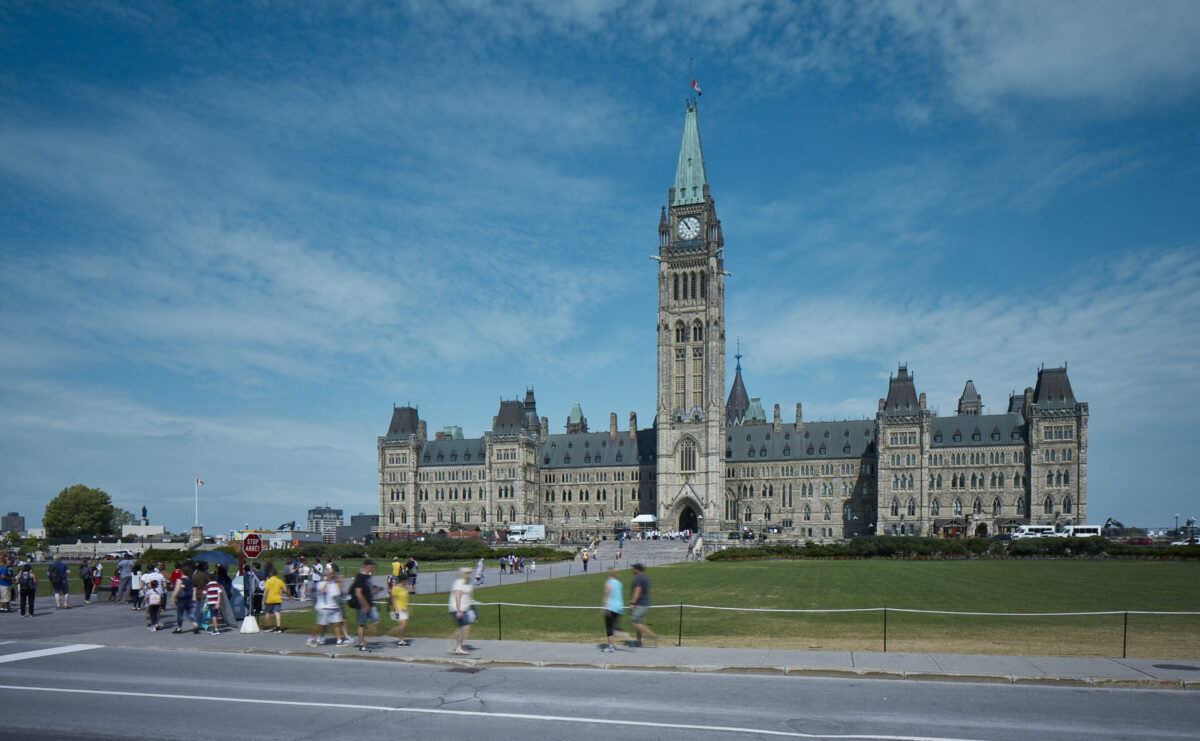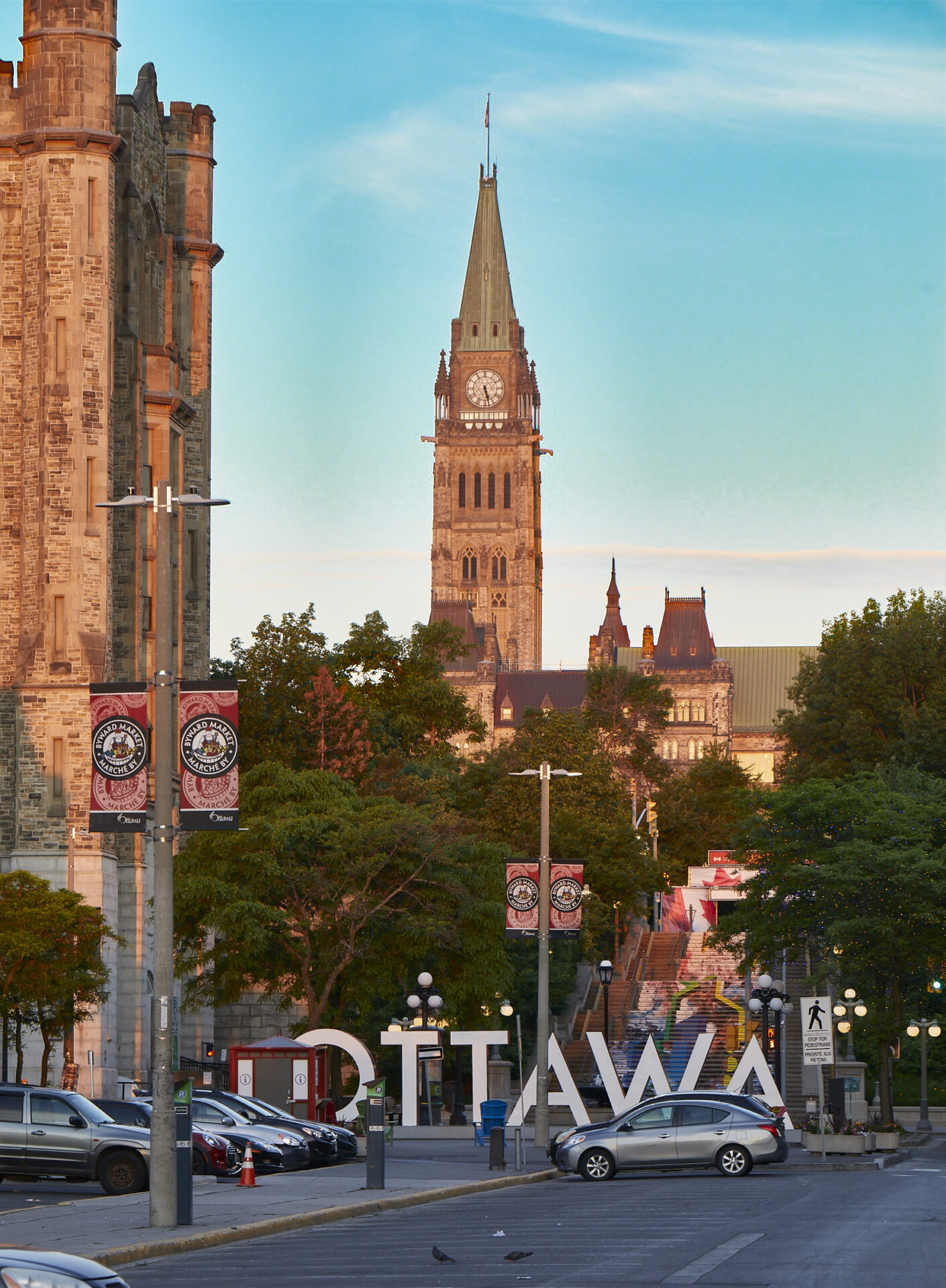Toon: Ambitious plan for south side of Wellington Street shows how building design should be done

Ottawa is poised to see another major investment from the federal government, making a commitment to jobs, infrastructure and quality architecture in the heart of our city. This sets a great example for how our city can partner with Public Services Procurement Canada (PSPC) to be the beautiful capital we aspire to be.
In 2021, the federal government launched a design competition for the site known as Block 2. This full city block is bordered by O’Connor, Metcalfe and Sparks streets and fronts onto Wellington Street, directly across from Parliament Hill. In a rare move, rather than simply select one design team with little or no opportunity to show off its design talent, PSPC short-listed firms, ultimately selecting six finalists to develop concepts and present them to the public.
In May 2022, PSPC selected David Chipperfield Architects (London, U.K.) in partnership with Zeidler Architecture (Toronto). Their creative design weaves together heritage and new buildings in a net-zero building that helps, in the words of Canadian Architect, “represent a bold new architectural expression of Canadian identity … the plurality of form of these polychromatic buildings represents and celebrates a diverse nation.”
Now, the project moves forward with the first of many approvals. To construct this building, two lanes of Wellington Street need to be closed, as well as one lane on O’Connor and Metcalfe streets, needing approval from the transportation committee.
Of such picayune approvals are great projects made or stalled.
This should be a no-brainer. This road closure should be permanent. I have long argued that Wellington Street should be closed to regular car traffic and, broadly, our downtown streets could do with less traffic, creating better places for people. Cities around the world, including in nearby Montreal, have done this and seen their communities thrive. More car-free spaces mean places for people to walk; places for cafes and restaurants to have patios; for artists to perform; for “cheap and cheerful” things for people to do, like we saw on the NCC’s Summer Zone.

We should create a plaza for people to gather, to celebrate and to protest peacefully. We should continue to make a better place for people and support a better vision for the city, including a tram (as proposed by the NCC) and transferring ownership of Wellington to the federal government.
We need to imagine the possibility of a welcoming, safe and accessible public realm.
Partial road closures should be approved. Ottawa’s transportation needs to be seen as more than the commuter headache suggested in a recent Citizen article, but as an critical first step in making a better Ottawa.
Likewise, Ottawa staff and council need to see the benefits of this sort of project.
A staged design competition with public presentation of ideas could be used for community centres, libraries, parks and street redevelopment. Conventional processes mean the city hires one design team, usually driven by the cheapest price. Design is never considered at the Request for Proposal (RFP) stage. If there is any public engagement, it is after a design is largely done and is, at best, performative.
The people of Ottawa deserve a better city. So do the millions of tourists who come here every year.
Our city should be a place where designs for parks, buildings and other places are seen as good investments in making a welcoming, accessible, sustainable city. There is untapped talent in Ottawa that could create these results and deliver better value, saving money and improving our quality of life. That talent typically doesn’t respond to the city request-for-proposals process for many reasons I’ve written about before, not the least of which is a lack of design culture.
Block 2 is a unique opportunity to be different. We can learn from this federal example and the solutions aren’t complicated:
— Hold proper design competitions for public projects, creating better value and engaging local talent, giving the public a voice in the design process;
— Think boldly about creating a world-class capital city on par with our other G7 capital partners like Washington, Paris or London
— Be creative about placemaking that isn’t dependent on the short-term needs of car commuters and tour buses choking one of the most important streets in our city.
We can be a beautiful, welcoming and sustainable city. Let’s support federal investment in our downtown, bringing jobs, new office space and creative ideas to make our best Ottawa possible.
Originally published in The Ottawa Citizen.